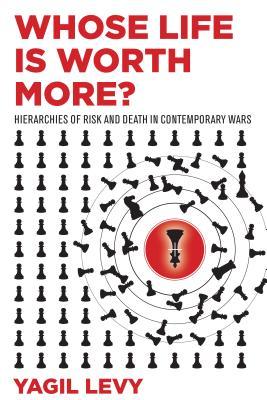Read Whose Life Is Worth More?: Hierarchies of Risk and Death in Contemporary Wars - Yagil Levy | ePub
Related searches:
Definition and Examples of Syntactic Hierarchy
Whose Life Is Worth More?: Hierarchies of Risk and Death in Contemporary Wars
Whose Life Is Worth More? : Hierarchies of Risk and Death in
Cite Whose Life Is Worth More?: Hierarchies of Risk and Death
Hierarchies of Grief and the Possibility of War: Remembering
Was the life of flagstaff police officer tyler stewart worth more than the life of a private citizen? was it worth more sympathy, more admiration, more media attention?.
Whose life is worth more? hierarchies of risk and death in contemporary wars. What is the difference between desk, examination, and review copies?.
Get this from a library! israel's death hierarchy� casualty aversion in a militarized democracy. [yagil levy] -- whose life is worth more? that is the question that states inevitably face during wartime.
Linked to whose life is grievable: “grievability is a presupposition for the life that matters. ”17 put differently, butler argues that there is a “hierarchy of grief”, which is visible in the “genre of the obituary, where lives are quickly tidied up and summarized, humanized”.
Syntactic hierarchy is any ordering of units or levels on a scale of size, abstraction, or subordination. In grammar, hierarchy refers to any ordering of units or levels on a scale of size, abstraction, or subordination.
There is also the moral question of whose life is worth more? is it fair to invest a large sum of money curing a rare disease to save a small group of people? should money be spent to make people who are suffering from a terminal illness more comfortable, or should that money go towards reducing child mortality in third world countries?.
In israel’s death hierarchy, yagil levy uses israel as a compelling case study to explore the global dynamics and security implications of casualty sensitivity. Israel, levy argues, originally chose to risk soldiers mobilized from privileged classes, more than civilians and other soldiers.
The first of its kind, whose life is worth more? reveals that how these decisions are made is much more nuanced than conventional wisdom suggests. When these states are entangled in prolonged conflicts, hierarchies emerge and evolve to weigh the value of human life.
Or perhaps more practically, how should life end? for a country in which life expectancy is approaching 80 years, and for whom 20% of the population will be between the ages of 66 and 84 by 2030, these questions are more than theoretical.
“whose life is worth more’” is an exceptional tool for anyone looking to understand how hierarchies of life are at work in political conflicts and its resulting death tolls. But it is also a must-read manual for scholars interested in studying the consequences of war on civilians, specifically in the case of civil wars which are no longer.
Whose life is worth more? that is the question that states inevitably face during wartime. As the gaza offensive of 2009 demonstrates, this new death hierarchy.
Don’t talk to all your employees, all your users, or all your prospects the same way, because they’re not the same. An award-winning team of journalists, designers, and videographers who tell brand stories through fast company's distinctive.
A professional cluster-balloonist re-created up's flying house this weekend. A professional cluster-balloonist re-created up's flying house this weekend.
Com, social hierarchy, or social stratification, is defined as the hierarchical or vertical division of society according to caste, according to dictionary.
Whose life is worth more? the greatest achievement of the palestinians is the fact that, within only two years, they have marked all israeli citizens as targets, have struck a major blow to the israeli economy and to the country's tourist trade, and have, through acts of terrorism, created a mood of fear and anxiety in israeli society.
In both the animal kingdom and human society, social hierarchy exists. You can think of social hierarchy as a type of ladder that categorizes people. Hierarchy is often based on factors like race, gender, and socioeconomic status.

Post Your Comments: